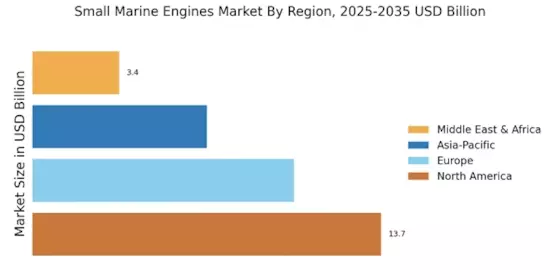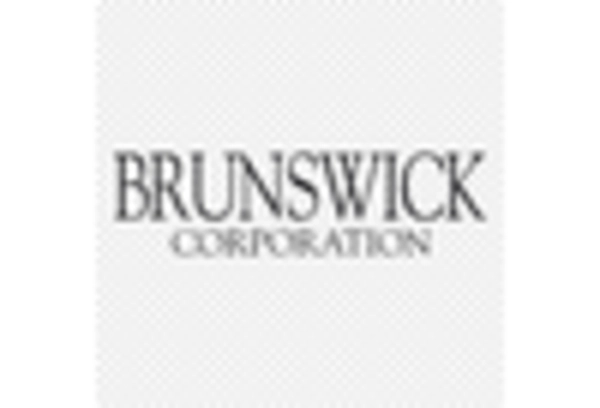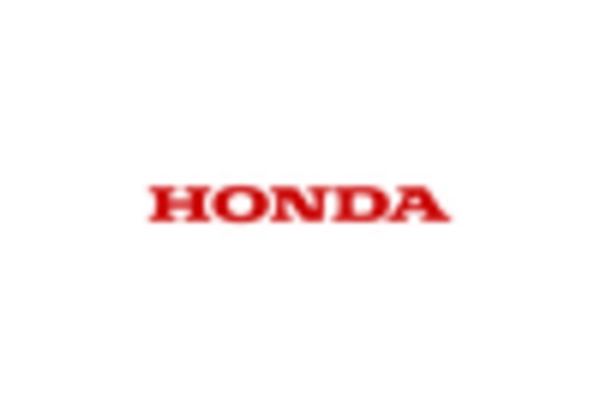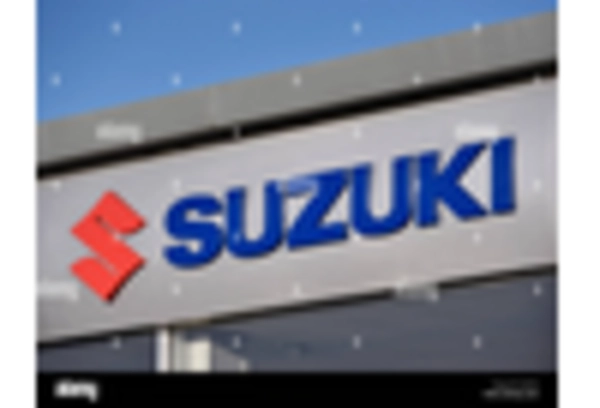Increasing Environmental Regulations
The Small Marine Engines Market is significantly influenced by the tightening of environmental regulations aimed at reducing emissions from marine engines. Governments across various regions are implementing stricter standards to mitigate the environmental impact of boating activities. These regulations often mandate the adoption of cleaner technologies and fuels, compelling manufacturers to innovate and develop engines that comply with these standards. For example, the introduction of Tier 4 emissions standards has prompted engine manufacturers to invest in research and development to create engines that produce fewer emissions. This regulatory landscape not only drives technological advancements but also encourages the adoption of alternative fuels, such as biofuels and electric propulsion systems. Consequently, the Small Marine Engines Market is likely to witness a shift towards more environmentally friendly engine solutions, aligning with global sustainability goals.
Growth of Commercial Marine Activities
The Small Marine Engines Market is experiencing growth due to the expansion of commercial marine activities, including fishing, tourism, and transportation. As these sectors expand, the demand for reliable and efficient small marine engines increases. The fishing industry, in particular, relies heavily on small marine engines for various operations, from small fishing vessels to larger commercial boats. Recent statistics indicate that the commercial fishing sector has seen a resurgence, leading to heightened demand for engines that can withstand rigorous operational conditions. Additionally, the tourism sector's growth, characterized by an increase in boat tours and water sports, further fuels the need for small marine engines. This trend suggests that the Small Marine Engines Market is well-positioned to capitalize on the increasing demand from commercial marine activities, driving innovation and investment in engine technology.
Rising Demand for Recreational Boating
The Small Marine Engines Market experiences a notable surge in demand for recreational boating activities. As leisure boating becomes increasingly popular, the need for efficient and reliable small marine engines escalates. In recent years, the number of registered recreational boats has shown a steady increase, indicating a growing consumer interest in boating as a leisure activity. This trend is further supported by the rise in disposable income among consumers, allowing for greater investment in recreational pursuits. The Small Marine Engines Market is likely to benefit from this trend, as manufacturers strive to meet the evolving preferences of boaters seeking enhanced performance and fuel efficiency. Furthermore, the expansion of marinas and boating facilities contributes to the accessibility of recreational boating, thereby driving the demand for small marine engines.
Technological Innovations in Engine Design
Technological advancements play a pivotal role in shaping the Small Marine Engines Market. Innovations in engine design, such as the development of lightweight materials and improved fuel efficiency technologies, are transforming the landscape of small marine engines. Manufacturers are increasingly focusing on enhancing engine performance while minimizing environmental impact. For instance, the integration of advanced fuel injection systems and turbocharging technologies has led to significant improvements in engine efficiency. According to recent data, engines equipped with these technologies can achieve up to 30% better fuel economy compared to traditional models. This shift towards more efficient engines not only meets regulatory requirements but also aligns with consumer preferences for sustainable boating solutions. As a result, the Small Marine Engines Market is poised for growth as manufacturers continue to innovate and adapt to changing market demands.
Shift Towards Electrification and Hybrid Solutions
The Small Marine Engines Market is witnessing a notable shift towards electrification and hybrid propulsion systems. As environmental concerns gain prominence, boat manufacturers and consumers are increasingly exploring electric and hybrid engine options. This transition is driven by advancements in battery technology and the growing availability of charging infrastructure. Recent data indicates that electric propulsion systems can reduce operational costs significantly while providing quieter and more efficient performance. The adoption of hybrid solutions, which combine traditional engines with electric power, offers flexibility and improved fuel efficiency. This trend aligns with the broader movement towards sustainable practices in the marine industry. As a result, the Small Marine Engines Market is likely to see a rise in the development and adoption of electrified propulsion systems, catering to the evolving preferences of environmentally conscious consumers.


















Leave a Comment